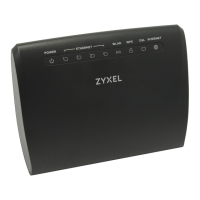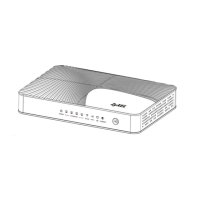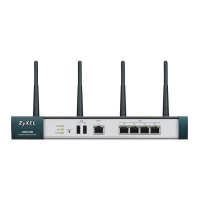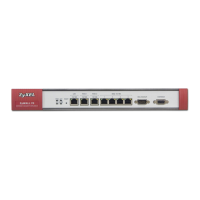Chapter 17 Remote Management
AMG1302-T10A User’s Guide
180
17.1.1 What You Can Do in the Remote Management Screens
•Use the WWW screen (Section 17.2 on page 181) to configure through which interface(s) and
from which IP address(es) users can use HTTP to manage the Device.
•Use the Telnet screen (Section 17.3 on page 181) to configure through which interface(s) and
from which IP address(es) users can use Telnet to manage the Device.
•Use the FTP screen (Section 17.4 on page 182) to configure through which interface(s) and from
which IP address(es) users can use FTP to access the Device.
• Your Device can act as an SNMP agent, which allows a manager station to manage and monitor
the Device through the network. Use the SNMP screen (see Section 17.5 on page 183) to
configure through which interface(s) and from which IP address(es) users can use SNMP to
access the Device.
•Use the DNS screen (Section 17.6 on page 185) to configure through which interface(s) and
from which IP address(es) users can send DNS queries to the Device.
•Use the ICMP screen (Section 17.7 on page 185) to set whether or not your Device will respond
to pings and probes for services that you have not made available.
17.1.2 What You Need to Know About Remote Management
Remote Management Limitations
Remote management does not work when:
• You have not enabled that service on the interface in the corresponding remote management
screen.
• You have disabled that service in one of the remote management screens.
• The IP address in the Secured Client IP Address field does not match the client IP address. If
it does not match, the Device will disconnect the session immediately.
• There is already another remote management session with an equal or higher priority running.
You may only have one remote management session running at one time.
• There is a firewall rule that blocks it.
Remote Management and NAT
When NAT is enabled:
• Use the Device’s WAN IP address when configuring from the WAN.
• Use the Device’s LAN IP address when configuring from the LAN.
System Timeout
There is a default system management idle timeout of five minutes (three hundred seconds). The
Device automatically logs you out if the management session remains idle for longer than this
timeout period. The management session does not time out when a statistics screen is polling.

